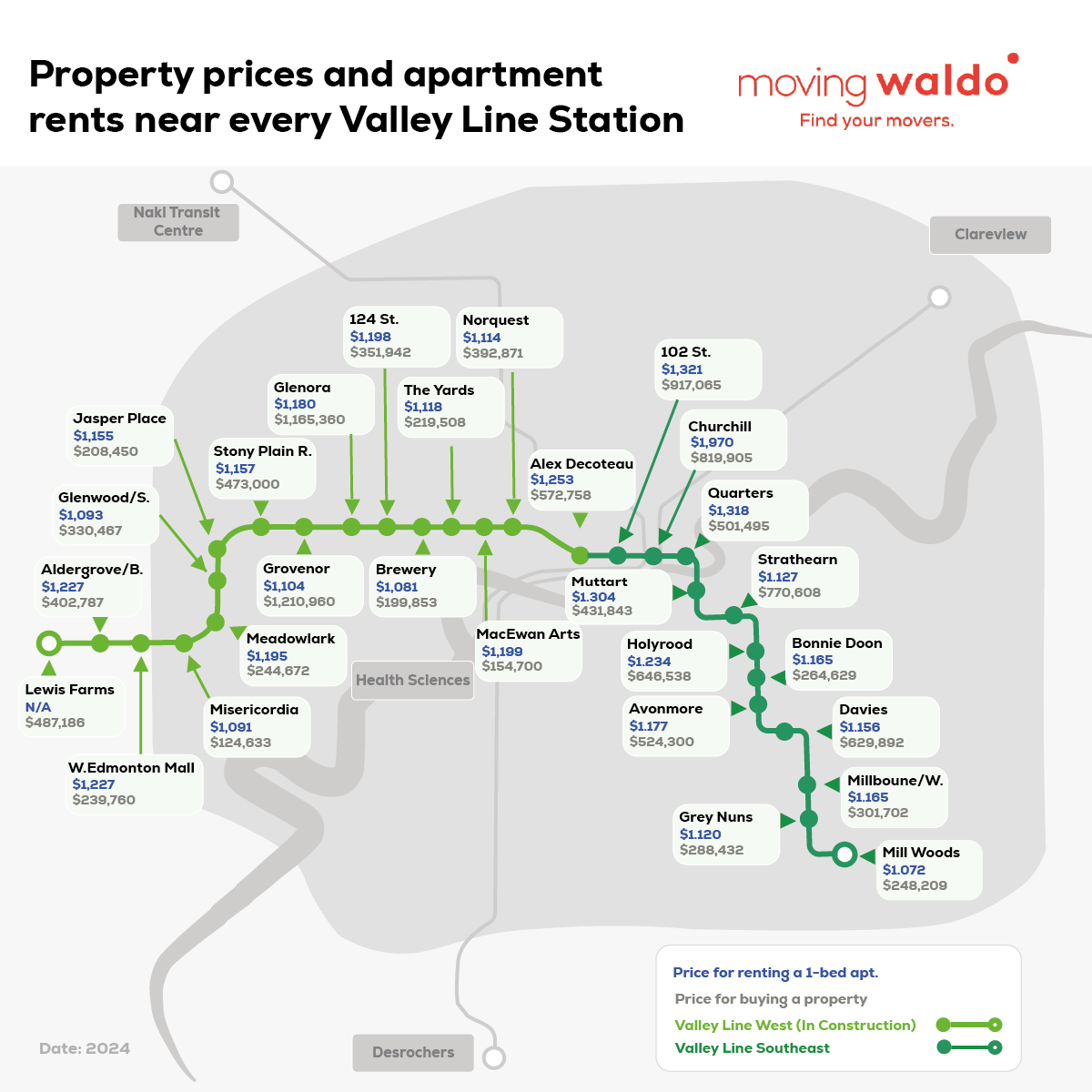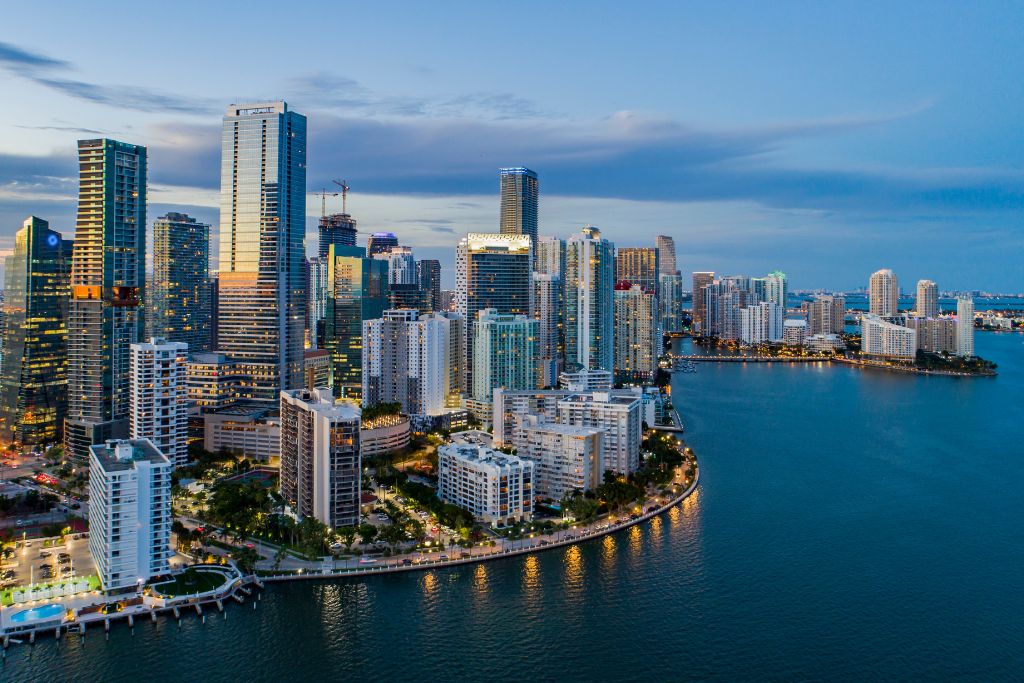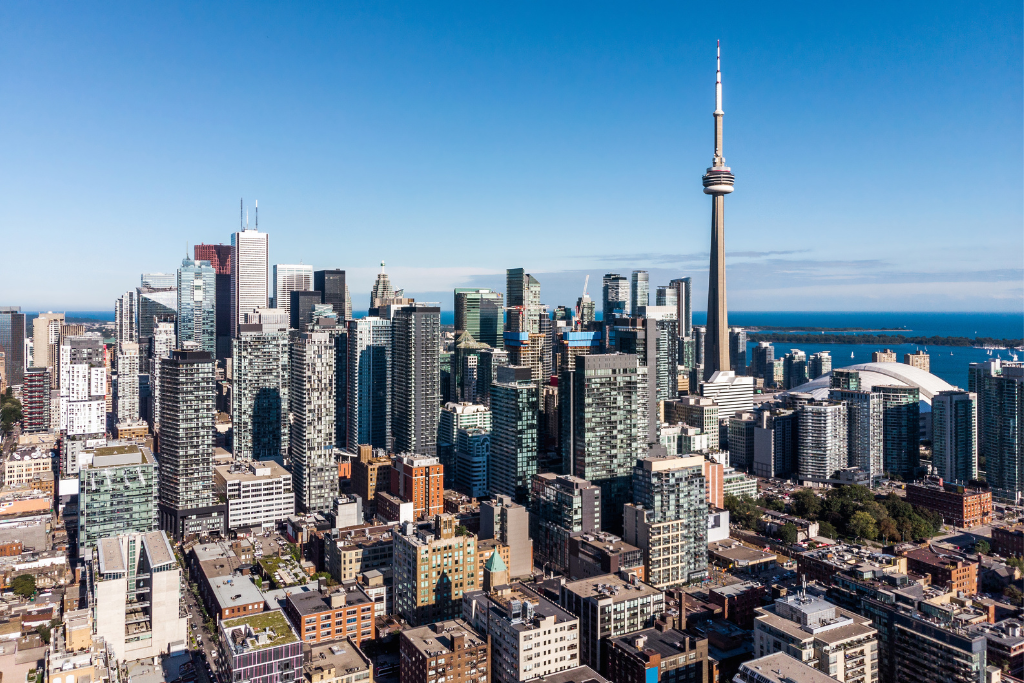Frequently asked questions
What is The Churchill connector?
The Churchill Connector links the Valley Line and future above-ground lines to Churchill LRT station. It features stairs, escalators, and an elevator, facilitating riders’ transfers to Capital and Metro Line trains.
What is the LRT-Edmonton Valley Line Southeast schedule and frequency?
The LRT-Edmonton Valley Line Southeast runs from Mill Woods in the southeast to 102 Street downtown.
| Mon-Fri |
Frequency |
| 5:00 am – 6:00 am |
10 minutes |
| 6:00 am -10:00 am |
5 minutes |
| 10:00 am-2:30 pm |
10 minutes |
| 2:30 pm -6:30 pm |
5 minutes |
| 6:30 pm -9:30 pm |
10 minutes |
| 9:30 pm-end of service |
15 minutes |
| Sat |
Frequency |
| 5:00 am-6:30 pm |
10 minutes |
| 6:30 pm-end of service |
15 minutes |
| Sun |
Frequency |
| 5:00 am-end of service |
15 minutes |
Can you bring bikes on the Edmonton LRT?
Starting August 30, 2021, bicycles are permitted on the LRT at all times. Riders must dismount and walk their bikes on LRT platforms.
Here’s what to do:
- Walk your bike in LRT stations and vehicles, using stairs, escalators, or elevators while yielding to others.
- Pay the regular ETS fare; bikes ride for free.
- Enter and exit through the middle doors of the LRT vehicle, using designated doors marked with green signs.
- Stay with your bicycle at all times, holding onto it while riding the LRT.
Don’t:
- Sit on your bike or prop it against seats or doors.
- Chain your bike to poles or seats.
- Allow mud or grease to drop onto LRT property or passengers.
Note: ETS may refuse entry to cyclists in crowded or unsafe conditions. Regulations are governed by City of Edmonton Bylaw No. 8353. ETS is not liable for damages to bicycles on its property.
Does a transit pass in Edmonton work for LRT?
A transit pass in Edmonton works for the LRT (Light Rail Transit). Users can use their transit pass to access the LRT system along with other Edmonton Transit Service (ETS) services such as buses and the Edmonton Metro Line. Get an arc card, plan your trip and check the offers on daily park and ride options located around the city for your convenience.
How is Edmonton implicated in Transit Oriented Development (TOD)?
In Edmonton’s city plan for Transit-Oriented Development (TOD), pedestrians and cyclists are prioritized. Streets, buildings, and public spaces should be designed to create a high-quality environment with appealing streets and engaging building fronts. Roadways and paths must provide easy access to transit stations. TOD aims to create complete communities with residential, employment, and retail uses easily accessible by foot, bicycle, and transit.
The area within 400 meters of the station is known as the “station neighborhood.” Retail and commercial development will primarily occur along arterial and collector roads, supported by curbside parking, providing jobs and services for the TOD neighborhood.
Draft guidelines establish minimum and maximum expectations for housing types in TODs. Neighbourhood stations may include duplexes or row/townhouses, with low to mid-rise apartments on arterial and collector roads. Mid-rise apartments may be suitable in enhanced or center neighborhoods.
Where can I live near the Valley Line Stations?
Housing projects, properties for rent, and properties for sale near the Valley Line West:
Stations
|
Housing Projects
|
| Lewis Farms Stop |
|
| Aldergrove/Belmead Stop |
|
| West Edmonton Mall Station |
|
| Misericordia Station |
|
| Meadowlark Stop |
|
| Glenwood Sherwood Stop |
|
| Jasper Place Stop |
|
| Stony Plain Road/149 Street Stop |
|
| Grovenor/142 Street Stop |
|
| Glenora Stop |
|
| 124 Street Stop |
|
| Brewery/120 Street Stop |
|
| The Yards/116 Street Stop |
|
| MacEwan Arts Stop |
|
| NorQuest Stop |
|
| Alex Decoteau Stop |
|
Housing projects, properties for rent, and properties for sale near the Valley Line Southeast:
Stations
|
Housing Projects
|
| 102 St. Stop |
|
| Churchill Stop |
|
| Quarters Stop |
|
| Muttart Stop |
|
| Strathearn Stop |
|
| Holyrood Stop |
|
| Bonnie Doon Stop |
|
| Avonmore Stop |
|
| Davies Station |
|
| Millbourne/Woodvale Stop |
|
| Grey Nuns Stop |
|
| Mill Woods Stop |
|
Conclusion
The Edmonton LRT Valley Line, including Southeast and West extensions, is an important addition to the city’s transit infrastructure. The opening of Valley Line Southeast in November 2023, featuring 12 stations, marked a significant milestone as Edmonton’s first low-floor LRT system. Meanwhile, Valley Line West, currently under construction with 16 planned stations, is set to be completed by 2028.
Projected projects like Capital Line South and Metro Line Northwest Phase 1 reflect Edmonton’s commitment to transportation accessibility, promising to alleviate congestion and enhance residents’ quality of life. The LRT expansions provide a safe and reliable mode of transportation, leading to shorter commute times and increased freedom to explore the city.
Overall, moving to Edmonton with the presence of the Edmonton LRT Valley Line Southeast and West extensions offers improved accessibility and convenience. If in the future you decide to live in the areas near the station, our data above for renting and buying a property will help you decide where to settle, and booking movers will make it easier for you to move.
Stay tuned for our future projects about transit expansions in Edmonton by visiting our studies page.





